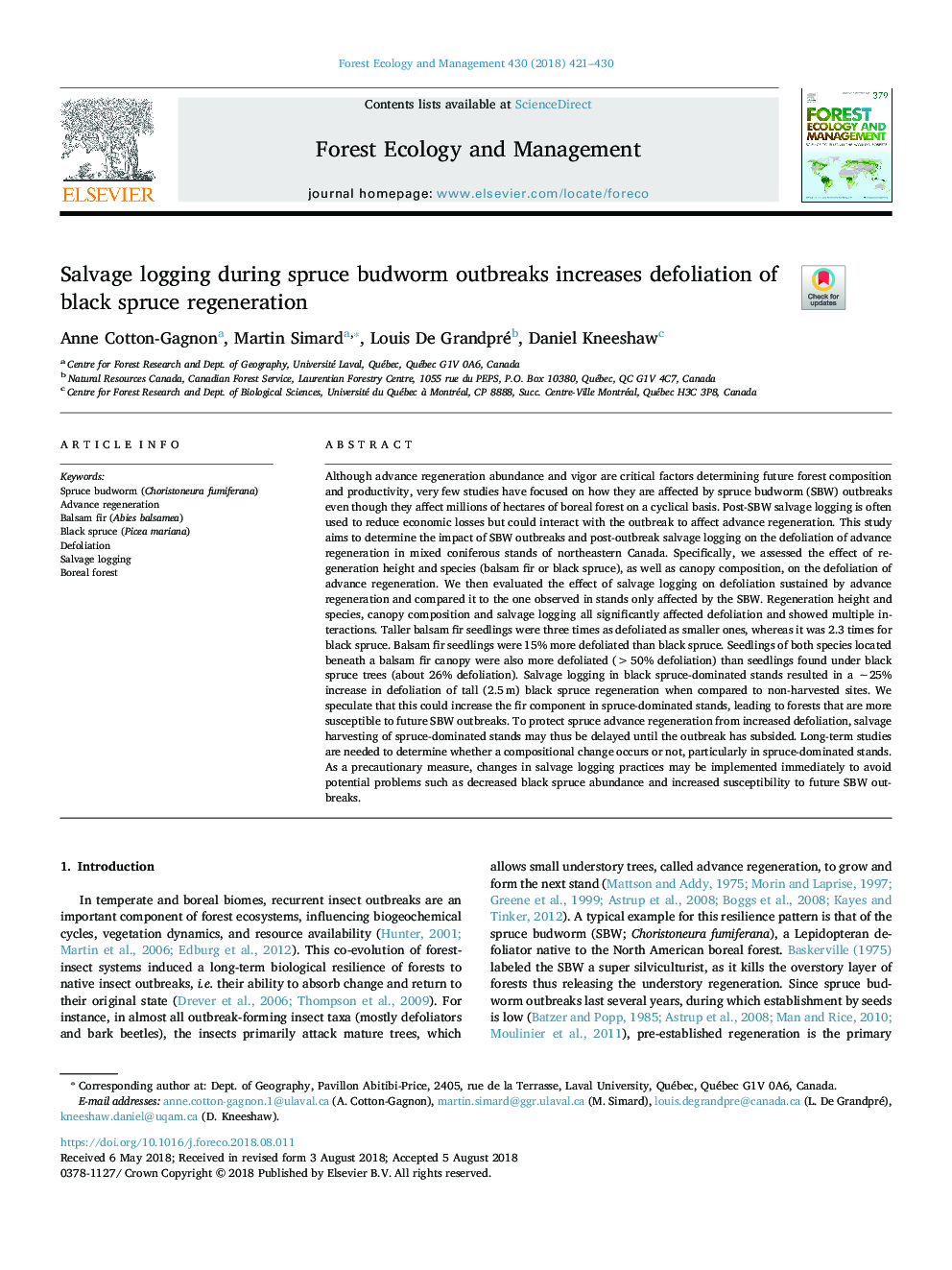| کد مقاله | کد نشریه | سال انتشار | مقاله انگلیسی | نسخه تمام متن |
|---|---|---|---|---|
| 11000037 | 1421330 | 2018 | 10 صفحه PDF | دانلود رایگان |
عنوان انگلیسی مقاله ISI
Salvage logging during spruce budworm outbreaks increases defoliation of black spruce regeneration
ترجمه فارسی عنوان
جنگل زدایی در طی شیوع جوک های گوشتی زراعت سبب کاهش زاد و ولد صنوبر سیاه پوست می شود
دانلود مقاله + سفارش ترجمه
دانلود مقاله ISI انگلیسی
رایگان برای ایرانیان
کلمات کلیدی
موضوعات مرتبط
علوم زیستی و بیوفناوری
علوم کشاورزی و بیولوژیک
بوم شناسی، تکامل، رفتار و سامانه شناسی
چکیده انگلیسی
Although advance regeneration abundance and vigor are critical factors determining future forest composition and productivity, very few studies have focused on how they are affected by spruce budworm (SBW) outbreaks even though they affect millions of hectares of boreal forest on a cyclical basis. Post-SBW salvage logging is often used to reduce economic losses but could interact with the outbreak to affect advance regeneration. This study aims to determine the impact of SBW outbreaks and post-outbreak salvage logging on the defoliation of advance regeneration in mixed coniferous stands of northeastern Canada. Specifically, we assessed the effect of regeneration height and species (balsam fir or black spruce), as well as canopy composition, on the defoliation of advance regeneration. We then evaluated the effect of salvage logging on defoliation sustained by advance regeneration and compared it to the one observed in stands only affected by the SBW. Regeneration height and species, canopy composition and salvage logging all significantly affected defoliation and showed multiple interactions. Taller balsam fir seedlings were three times as defoliated as smaller ones, whereas it was 2.3 times for black spruce. Balsam fir seedlings were 15% more defoliated than black spruce. Seedlings of both species located beneath a balsam fir canopy were also more defoliated (>50% defoliation) than seedlings found under black spruce trees (about 26% defoliation). Salvage logging in black spruce-dominated stands resulted in a â¼25% increase in defoliation of tall (2.5â¯m) black spruce regeneration when compared to non-harvested sites. We speculate that this could increase the fir component in spruce-dominated stands, leading to forests that are more susceptible to future SBW outbreaks. To protect spruce advance regeneration from increased defoliation, salvage harvesting of spruce-dominated stands may thus be delayed until the outbreak has subsided. Long-term studies are needed to determine whether a compositional change occurs or not, particularly in spruce-dominated stands. As a precautionary measure, changes in salvage logging practices may be implemented immediately to avoid potential problems such as decreased black spruce abundance and increased susceptibility to future SBW outbreaks.
ناشر
Database: Elsevier - ScienceDirect (ساینس دایرکت)
Journal: Forest Ecology and Management - Volume 430, 15 December 2018, Pages 421-430
Journal: Forest Ecology and Management - Volume 430, 15 December 2018, Pages 421-430
نویسندگان
Anne Cotton-Gagnon, Martin Simard, Louis De Grandpré, Daniel Kneeshaw,
